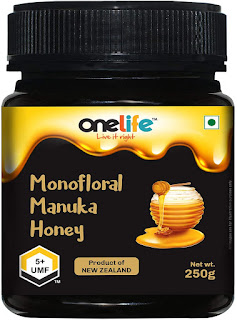World Honey Bee Day
Honey Bee: -
Honey bees are known for their
construction of nests from wax and surplus production and storage of honey
distinguishing their hives.
Role of Honey Bee in World Prosperity: -
It takes more than soil, water, and sunshine to make the world green. At least 30% of the world’s crops and 90% of all plants require cross-pollination to spread and thrive. Wild plants depend on insect pollinators as well. The greatest contribution of bees and other pollinators is the pollination of nearly three quarters of the plants that produce 90% of the world’s food. A third of the world’s food production depends on bees, i.e. every third spoonful of food depends on pollination. Honey Bees are the major pollinators, thus ensuring food and food security, sustainable agriculture and biodiversity.
Bees significantly contribute to the mitigation of climate change and environmental conservation. In the long-term, the protection of bees and the beekeeping sector can help reduce poverty and hunger, as well as preserve a healthy environment and biodiversity.
Honey Bees are in danger: -
Bee populations here and around the world are in decline. Scientific studies have proven that bees have become increasingly endangered.
Climate change causes some flowers to bloom earlier or later than usual, leaving bees with fewer food sources at the start of the season. Bees suffer habitat loss from development, abandoned farms, and the lack of bee-friendly flowers. Some colonies collapse due to plants and seeds treated with neonicotinoid pesticides, or harmful parasites like mites.
The Quote to Remember: - “If the bee disappears from the surface of the Earth, man would have no more than four years left to live.”
How to identify original Honey: -
High-quality honey can be distinguished by fragrance, taste, and consistency. Ripe, freshly collected, high-quality honey at 20 °C should flow from a knife in a straight stream, without breaking into separate drops. After falling down, the honey should form a bead. The honey, when poured, should form small, temporary layers that disappear fairly quickly, indicating high viscosity. In jars, fresh honey should appear as a pure, consistent fluid, and should not set in layers.
Uses of Honey: -
- One
hundred grams of honey provides about 304 kcal of energy. Composed of 17%
water and 82% carbohydrates, honey has low content of fat, dietary fiber,
and protein.
- It has been used in medicine for over 5,000 years for chronic and acute coughs.
- Honey
is linked to wound-healing properties and antibacterial action.
- Honey can replace sugar in meals, providing a healthier option. They can also add browning and excess moisture to a dish.
Honey Bees in Mythology: -
The God Vishnu have been depicted as bees sitting on lotus flowers and said to be “Madhava” or "Nectar Born”.
In Islam, an entire chapter (Surah) in the Qur'an is called an-Nahl (the Bees). According to his teachings (hadith), Muhammad (peace be upon him) strongly recommended honey for healing purposes. The Qur'an promotes honey as a nutritious and healthy food.
In ancient Egypt, it was believed that Ra, the sun god, created the honeybee from his tears. The bee was then seen as the messenger of the gods, falling from Ra's face, down to earth, where she could deliver the messages from the heavens.




Comments
Post a Comment
Thank you. Visit again to avail more offers